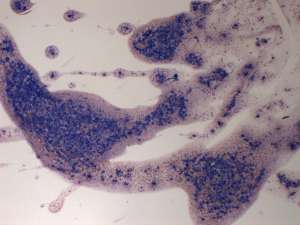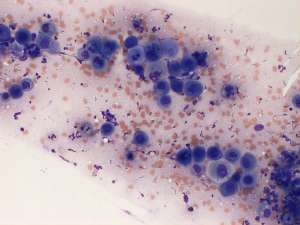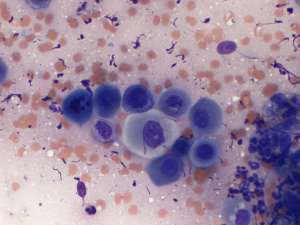Squamous cell carcinoma in the orbit of a dog
A nine-year-old male Rottweiler presented with unilateral exophthalmos and clinical findings revealed a retrobulbar mass. Fine needle aspirates were taken from the mass and the results are shown below.



Final Diagnosis
Squamous cell carcinoma (SCC)
Discussion
Squamous cell carcinomas are malignant, locally invasive neoplasms. The orbit would be a very unusual site for a primary SCC. A more common scenario is invasion of a primary sinonasal SCC through the medial orbital wall. Metastasis to the orbit from a primary SCC elsewhere is another possibility, but this is considered rare.

